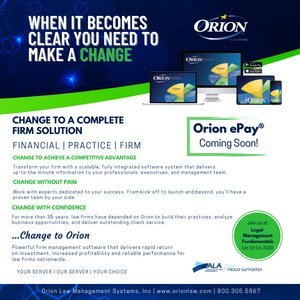If your workday is filled with stress, you are not alone. In a 2023 Gallup poll, 52% of regional workers reported feeling stressed, the highest levels in the world. It’s a recipe for burnout.
While it’s difficult to carve time to focus with so many competing tasks and interruptions, here are strategies you can implement now to help streamline your workload and boost your productivity even in the busiest of times.
1. The Two-Minute Rule
If you can get it done in two minutes or less, get it done. This quick and easy technique is a game-changer. Sign it, send it, click it, buy it, delegate it — whatever the action.
Move it off your desk and off your to-do list. It’s great to alternate this technique with bigger projects that take a lot of time, because you get the satisfaction of feeling productive when you knock a bunch of things off your project list.
2. Schedule in Advance
Start your day on the right foot by spending 10 to 15 minutes each morning prioritizing and planning your day. Target three priorities to accomplish each day. It’s tempting to think you are going to get 10 items knocked off your to-do list, but that rarely happens, and they may not be the most important items on your list.
Next, dig into your calendar and begin to block time for completing those specific tasks. Having a solid game plan in place will help you be less reactive and still be able to shift priorities quickly if an emergency comes up.
“If you can get it done in two minutes or less, get it done. This quick and easy technique is a game-changer.”
“Preplanning is how I stay the most productive,” says Patrick Thacker, an Associate at Acito Klein & Candiloros, P.C. “I find that adding in buffer time between meetings as well as being prepared for all my meetings in advance helps me to have productive days.”
By adding in buffer time and completing two-minute tasks you can better prepare for an upcoming event, or you can take time to thoughtfully transition to your next task. Without planning for your day, Thacker notes that you’ll find that you start the day scrambling and end the day wondering where all the time went. Planning his day allows him to be proactive and have a sense of accomplishment.
3. Limit Distractions
First, get clear on what is distracting you. Are you being interrupted by text messages? The constant ping alert from your emails? Or is it hunger, and you need to take a break?
“The top distractions that people identify include social media and emails. Both can easily throw off your momentum.”
Having an awareness about what is distracting you can be the first step to fixing it. The top distractions that people identify include social media and emails. Both can easily throw off your momentum. Using sites that block social media and websites you waste time on allows you to remain focused. Closing out of extra browser tabs on your computer reduces the temptation to toggle between windows. These steps along with eliminating notifications will help decrease interruptions and create a better flow in your workday.
4. Match Your Energy to Your Tasks
Your energy levels dip and peak all through your workday. Work with your natural energy and rhythm throughout the day rather than pushing through projects and tasks. Spend a week or two tracking when you have high-energy times during your day. Once you have these high-energy times documented, use the information to schedule your peak times to maximize your biggest projects.
5. Stop Overwhelm
The more you feel overwhelmed at work, the greater number of unhealthy choices you’re likely to make. In addition, being overextended by your workload increases rates of absenteeism, presenteeism and burnout.
If you are feeling overwhelmed, chances are you have not identified the next actionable step to work on. Break down larger tasks into smaller actionable steps. You’ll know when you have defined a clear actionable step because you will have confidence in moving forward with no hesitation.
6. Take Breaks
The brain can take about 90 minutes of concentration before it begins to move into lower levels of focus. After periods of focused concentration, take a break. Take regular breaks to reenergize your mind and body throughout the day. Think about what your optimal times in the day are to take a break then schedule it into your calendar. Breaks are vital to the brain to recharge and allow you to reduce stress and burnout. Be sure to keep them short — less than 10 minutes — to reap the full benefit. Use your breaks as a way to reward yourself for completing important tasks or as a transition from one task to another. Whether it’s meditating for five minutes or a quick walk around the office, breaks help you clear your head so you can refocus and create a boost of energy.
Keeping on top of your workday can be a struggle. When you implement these techniques, you gain the upper hand on the impending tasks you have to complete. These small wins will allow you to have control over your workday so that you can have better days at work.


